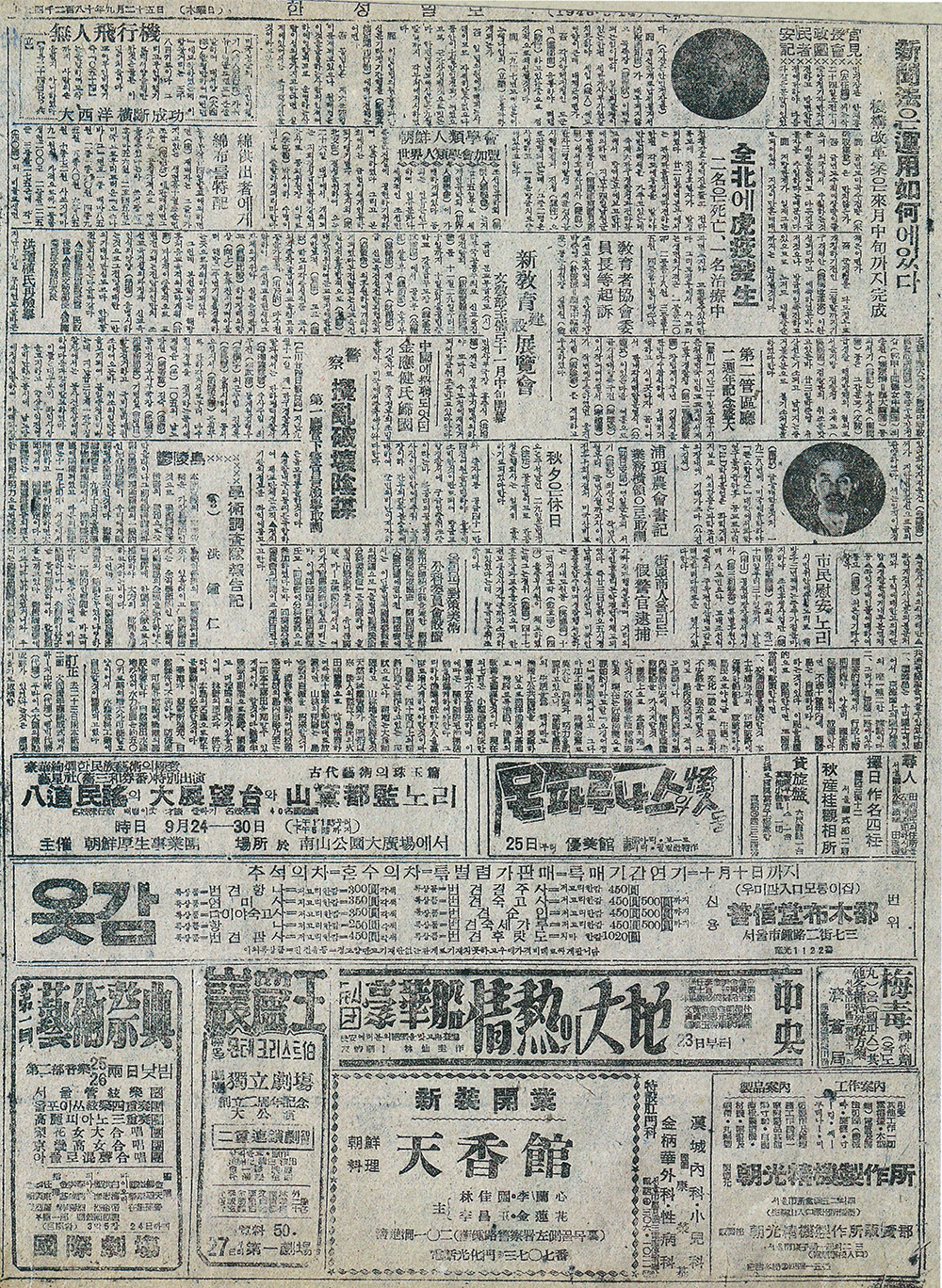Dokdo, the First Victim of Japan’s Aggression Against the Korean Peninsula
04. “Ulleungdo Scientific Expedition Report (3) by Hong Jong-in,” Hanseong Ilbo (September 25, 1947)
Hanseong Ilbo
“Ulleungdo Scientific Expedition Report (3) by Hong Jong-in,” Hanseong Ilbo (September 25, 1947)
[Translation]
The [whole expedition process] will be finalized by publishing scientific research reports as the most concrete result. Before that, we will hold debriefing sessions and exhibitions and publish a general [report that introduces] the island to the public. The debriefing held at the Seoul Science Museum on September 10 was a great success. The next exhibition will be held in Seoul in early November, and if circumstances permit, also in Daegu. The exhibition will display XXX materials of each unit including photos taken at great cost and effort by the Media Unit. Our scientific reports will reveal every aspect of Ulleungdo from a very scientific perspective and serve as reference material for Korean academia. We humbly [seek] criticism by many.
Before we could come up with the above, we have been asked the rather general question of what the conclusion of the Ulleungdo expedition is, and we believe there is a need to promptly [provide] its essence in a simple but comprehensive way. As already shown in the debriefing session, we, all the participants of the Ulleungdo expedition, have come to the following common conclusions:
1. Ulleungdo has a unique position in our territory in developing national power in the East Sea.
2. The island is, nevertheless, on a downward spiral. If left without special administrative and protective measures by the government, it will collapse to nothing within not much more than ten years. Its situation is explained further and suggestions to the relevant authorities are made in the following:
1) Its access should be improved. The anxiety and inconveniences experienced by its residents from the island being an isolated island in terms of daily life, livelihood, and culture should be relieved by commissioning excellent ships to provide regular service between the island and Pohang. The administration office or police, at least, should be given a boat to be used in their patrol and rescue activities.
1) Fishery is the only industry of the island and should be actively promoted. It is presently limited to inshore fishery, more specifically, catching squid by primitive methods, and much of the catch and fishermen’s effort is wasted because there are no processing facilities. The construction of public facilities for fishery should be considered if only to help the residents make their living. This is a pressing task. Also, to ensure the development of the island as a base of deep-sea fishery, its fishing crafts and gear must be improved or replaced. The risk and anxieties caused by the small, 700-ton boats they are currently using should be addressed, which would expand their extremely limited fishing activities. This would go a long way toward greatly increasing their income from fishing.
1) Because the farmland on the island is on mountain slopes of 40 or more degrees, the cultivated acreage should be greatly limited to protect the forests. The natural extent and quality of forest have been greatly reduced since the first human settlement of the island by theft by the Japanese invaders and land clearing by burning by the residents. If neglected for another ten years or so, the devastation of the forests will lead to the destruction of the island as a whole. Reforestation should be encouraged so that timber for boats, construction, and furniture can be supplied on the island and can even be exported to the mainland. There must be room for further promotion of silkworm farming and silk weaving as side industries for farming or semi-farming households. Alongside the formation of forest land, it is necessary to promote cattle ranching to create the island’s specialty product.
1) Regarding harbor construction and expansion of power plants, despite disadvantageous natural conditions, harbor construction facilities such as breakwaters should be put in place at possible locations. Thanks to the existence of a natural catchment area, it seems that an increase of about 500 kWh is possible in waterpower generation to meet the demand of the island’s fishery and food processing industries.
[Original Text]















